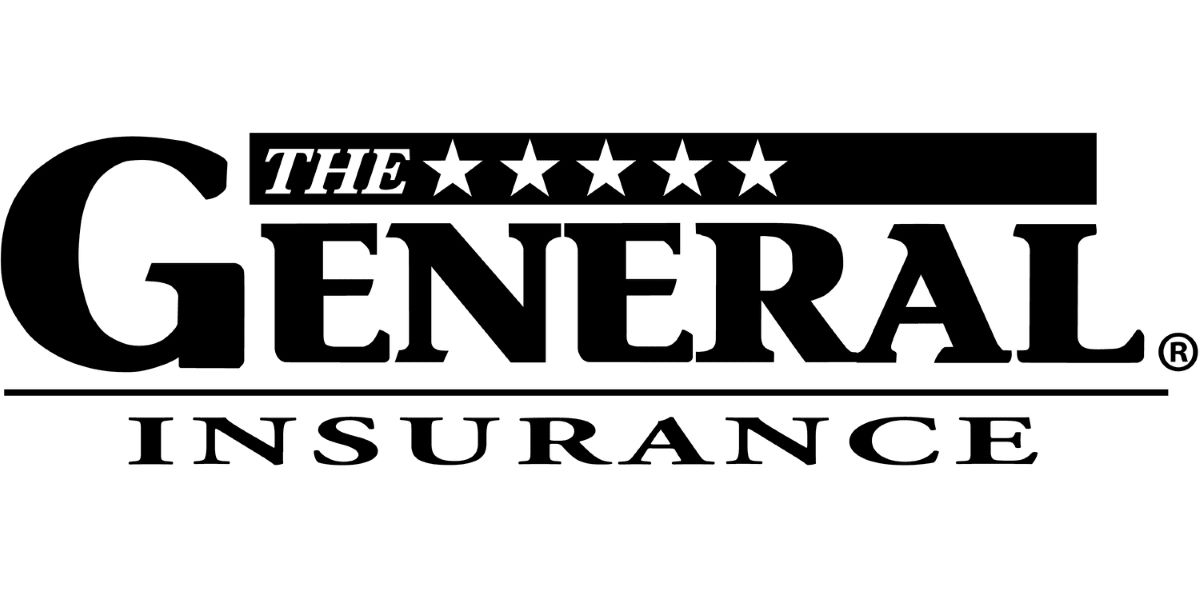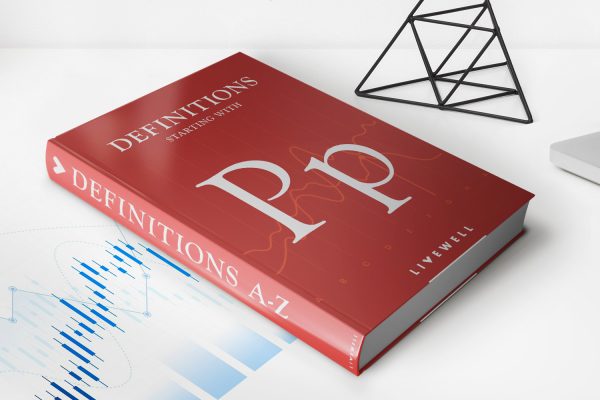

Finance
Who Owns Insurance Companies?
Published: November 16, 2023
Find out who owns insurance companies in the world of finance. Understand the key players and their impact on the insurance industry.
(Many of the links in this article redirect to a specific reviewed product. Your purchase of these products through affiliate links helps to generate commission for LiveWell, at no extra cost. Learn more)
Table of Contents
Introduction
Insurance companies play a crucial role in managing risk and providing financial protection to individuals, businesses, and organizations around the world. But have you ever wondered who actually owns these insurance companies? Are they publicly traded on the stock market, privately held by wealthy individuals, or perhaps even government-owned?
In this article, we will explore the ownership structure of insurance companies and delve into the various types of ownership models that exist within the industry. From publicly traded companies to mutual insurers and government-owned entities, the landscape of insurance ownership is diverse and complex.
Understanding the ownership dynamics of insurance companies is important for several reasons. It can shed light on the level of transparency and accountability in the industry, as well as the decision-making processes that shape the products and services offered by these companies. Additionally, it provides insight into the financial stability and long-term sustainability of insurance providers.
So, let’s embark on a journey to uncover the ownership structure of insurance companies and gain a deeper understanding of who holds the reins in this critical sector.
Types of Insurance Companies
In the world of insurance, there are various types of companies that cater to different market segments and offer a wide range of products and services. Here are some of the most common types of insurance companies:
- Life Insurance Companies: These companies specialize in providing coverage and financial protection in the event of the policyholder’s death. They offer policies such as term life insurance, whole life insurance, and universal life insurance.
- Health Insurance Companies: Health insurance companies focus on providing coverage for medical expenses, including hospitalization, medication, and doctor visits. They offer individual and group health insurance plans and often work in collaboration with healthcare providers and networks.
- Property and Casualty Insurance Companies: Also known as P&C insurance companies, they offer coverage for property damage, personal liability, and other related risks. This includes home insurance, auto insurance, and liability insurance for businesses.
- Reinsurance Companies: Reinsurance companies specialize in insuring other insurance companies. They help spread the risk of large-scale claims and provide financial support to insurers in case of catastrophic events or significant losses.
- Specialty Insurance Companies: Specialty insurance companies offer coverage for niche markets and specific risks. Examples include travel insurance, pet insurance, cyber insurance, and event cancellation insurance.
It’s important to note that some insurance companies may offer a combination of these types of coverage, while others may focus exclusively on one area. The structure and ownership of these companies can vary depending on their size, business model, and geographic location.
Shareholders and Ownership Structure
The ownership structure of insurance companies can vary depending on their legal structure and whether they are publicly traded, privately held, government-owned, or mutual insurers.
Publicly Traded Insurance Companies: Many insurance companies are publicly traded on stock exchanges. This means that they have issued shares of stock that can be bought and sold by individual and institutional investors. Shareholders in these companies can include large investment firms, pension funds, and individual investors.
Privately Held Insurance Companies: Some insurance companies are privately held, meaning that their ownership is held by a select group of individuals or families. These companies are not traded on public stock exchanges and tend to have more control over their operations and strategic decisions.
Government-Owned Insurance Companies: In certain countries, insurance companies may be owned or controlled by the government. These government-owned insurers often operate in sectors deemed critical to national interest, such as healthcare or catastrophe insurance. Their ownership structure provides stability and ensures the availability of insurance coverage in times of crisis.
Mutual Insurance Companies: Mutual insurance companies are owned by the policyholders themselves. Instead of having individual shareholders, policyholders become members of the company and are entitled to vote on company matters. Profits from a mutual insurance company can be distributed to policyholders in the form of dividends or used to improve policy offerings and services.
Cooperative Insurance Companies: Cooperative insurance companies operate similarly to mutual insurers, with policyholders owning and governing the company. However, cooperative insurers are often formed by businesses or organizations to provide insurance coverage exclusively to their members or employees.
It’s worth noting that the ownership structure of insurance companies can evolve over time as companies go through mergers, acquisitions, or initial public offerings (IPOs). These changes can impact the ownership and governance of the company.
Understanding the ownership structure of an insurance company is essential as it can provide valuable insights into the decision-making processes, accountability, and financial stability of the insurer. It can also influence the company’s long-term strategies and the types of products and services they offer to policyholders.
Publicly Traded Insurance Companies
Publicly traded insurance companies are those that have issued shares of stock that can be bought and sold on public stock exchanges. These companies offer the opportunity for individual and institutional investors to participate in their ownership and benefit from their financial performance.
One of the key advantages of publicly traded insurance companies is their ability to raise capital through the sale of shares. This capital can be used for various purposes, such as expanding operations, investing in technology and innovation, and acquiring other companies in order to grow their market presence.
Publicly traded insurers are subject to strict regulatory requirements and must adhere to reporting standards to ensure transparency and accuracy in financial disclosures. This level of transparency helps investors make informed decisions based on the company’s performance, growth prospects, and risk profile.
Shareholders of publicly traded insurance companies can include institutional investors, such as pension funds, mutual funds, and insurance companies themselves. Additionally, individual investors can also purchase shares through brokerage accounts, allowing them to participate in the company’s growth and potentially receive dividends.
The ownership structure of publicly traded insurance companies can be fluid, with shares changing hands in response to market demand and investor sentiment. This liquidity allows investors to buy or sell shares at any time, providing a level of flexibility in their investment portfolio.
Investors in publicly traded insurance companies have the potential to benefit from capital appreciation if the company’s stock price increases over time. They may also receive dividends, which are a portion of the company’s profits distributed to shareholders.
However, investing in publicly traded insurance companies also carries risks. Stock prices can be volatile, influenced by factors such as market conditions, economic trends, and industry-specific challenges. It is important for investors to conduct thorough research and consider factors such as the company’s financial strength, competitive position, and management team before making investment decisions.
Overall, publicly traded insurance companies play a vital role in the insurance industry, providing opportunities for investors to participate in the ownership of these companies and potentially benefit from their growth and profitability.
Privately Held Insurance Companies
Privately held insurance companies are entities whose ownership is held by a select group of individuals or families, rather than being publicly traded on stock exchanges. These companies operate with a different ownership structure compared to publicly traded insurers and often have more control over their operations and strategic decisions.
One of the advantages of being privately held is that these insurance companies have the flexibility to focus on long-term goals without the pressure of meeting quarterly earnings expectations imposed by public markets. This gives them more freedom to make strategic decisions that align with their vision and values.
Since privately held insurance companies are not subject to the same level of public scrutiny as publicly traded companies, they can maintain a higher level of confidentiality and privacy regarding their operations, financials, and business strategies. This can be advantageous in maintaining a competitive edge or protecting sensitive information.
Owners of privately held insurance companies often have a greater level of influence and control over the company’s direction and decision-making processes. This can lead to faster implementation of strategic initiatives and a more nimble response to changes in the market or regulatory environment.
Another characteristic of privately held insurers is that they may have a longer-term perspective, as the owners are typically more focused on building a sustainable and profitable business over time, rather than maximizing short-term stock price performance.
Privately held insurance companies may also have unique ownership structures, such as being family-owned or controlled by a small group of investors. This can result in a greater sense of stewardship and alignment between the owners and the company’s mission and values.
While privately held insurance companies may have certain advantages, they also face challenges. Since they do not have access to public markets for raising capital, they may rely on internal funds or strategic partnerships for growth and expansion. This can limit their ability to scale up compared to publicly traded insurers.
Overall, privately held insurance companies provide an alternative ownership structure that allows for greater control, flexibility, and long-term focus in the operations and decision-making of the company. Their ownership structure often reflects a deep commitment to the business and the ability to prioritize long-term sustainability over short-term market pressures.
Government-Owned Insurance Companies
Government-owned insurance companies are entities in which the ownership is held by the government. These companies operate in the insurance industry and play a significant role in providing coverage and managing risks, often in sectors considered critical to national interest.
One of the primary reasons for government ownership is to ensure the availability of insurance coverage, especially in areas where private insurers may be reluctant to provide coverage due to perceived risks or lack of profitability. Government-owned insurers can step in to fill these gaps and provide essential coverage to individuals, businesses, and organizations.
Government-owned insurance companies often operate in sectors such as healthcare, natural disaster coverage, and workers’ compensation. In these areas, the government has a vested interest in ensuring that its citizens or industries receive adequate protection, regardless of market conditions or private sector limitations.
Government ownership can provide stability and continuity in insurance services, particularly during times of crisis or catastrophic events. These insurers are often well-funded and have access to government resources, enabling them to offer coverage in situations where private insurers may be unable or unwilling to provide adequate protection.
Furthermore, government-owned insurance companies are guided by public policy objectives rather than solely driven by profit motives. This allows them to prioritize the social welfare of citizens and allocate resources to areas that benefit society as a whole.
However, government-owned insurers may face challenges such as bureaucratic processes and potential political interference in their operations. Balancing the needs of stakeholders, managing financial sustainability, and avoiding conflicts of interest are ongoing concerns for these companies.
Examples of government-owned insurance companies can be found in various countries around the world. For instance, National Health Service in the United Kingdom operates government-owned healthcare insurance, while the National Flood Insurance Program in the United States provides flood insurance coverage to areas prone to flooding.
In summary, government-owned insurance companies serve a crucial role in providing coverage where private insurers may not be willing or able to operate. They contribute to the overall stability and resilience of the insurance industry and ensure the availability of essential coverage to citizens and businesses.
Mutual Insurance Companies
Mutual insurance companies are unique in that they are owned by their policyholders. Unlike publicly traded or privately held insurers, mutual insurance companies operate with a cooperative ownership structure where policyholders become members of the company and have a say in its operations.
One of the key characteristics of mutual insurance companies is their policyholder-centric approach. Since the policyholders are also owners, the company’s primary focus is often on providing excellent service and meeting the needs of its members rather than maximizing profits for external shareholders.
Policyholders of mutual insurance companies have the opportunity to participate in the company’s governance by having voting rights. They may have a say in important decisions such as appointing board members, approving changes in policy terms, or making major strategic moves.
Another advantage of mutual insurance companies is their ability to distribute profits to policyholders in the form of dividends. When the company performs well financially, it can share its profits with the policyholders who contributed to its success. These dividends can provide tangible benefits to policyholders, potentially reducing the overall cost of their insurance coverage.
Since mutual insurers are owned by their policyholders and not driven by the demands of external investors, they often take a long-term view of their business. This allows them to focus on the needs and interests of their members, rather than being solely motivated by short-term financial performance.
However, there are also challenges associated with the mutual insurance model. Mutual insurers may face limitations in their ability to raise capital compared to publicly traded insurers. They rely heavily on policy premiums and investment returns to fund their operations and growth initiatives.
Additionally, membership in a mutual insurance company can sometimes be limited to specific groups or associations, such as policyholders from a particular region or individuals belonging to a particular profession. This may restrict the availability of coverage to a broader market.
Despite these challenges, mutual insurance companies have established a strong presence in various sectors, including life insurance, property and casualty insurance, and even healthcare insurance. They provide an alternative ownership structure where policyholders have a direct stake in the success of the company, promoting a focus on customer satisfaction, long-term stability, and shared benefits.
State and Regional Insurance Companies
State and regional insurance companies are entities that operate within a specific geographic area, such as a state or a particular region. These companies often cater to the insurance needs of local communities and are regulated by the respective authorities in their jurisdiction.
State and regional insurance companies are typically incorporated or licensed in a specific state or region and are subject to the laws and regulations of that particular area. This localized focus allows them to understand the unique risks and insurance needs of the local market and tailor their products and services accordingly.
One of the advantages of state and regional insurance companies is their deep understanding of the local market conditions, demographics, and regulatory requirements. This knowledge enables them to provide specialized insurance coverage that meets the specific needs of the communities they serve.
State and regional insurers also often play a vital role in supporting the local economy. By offering insurance coverage to local businesses and individuals, they help mitigate risks and provide financial protection in the event of unforeseen events or losses. This, in turn, contributes to the overall stability and resilience of the local economy.
These insurers can create strong partnerships with local agents and brokers who have extensive knowledge of the local community and can better serve policyholders. This personal touch and accessibility can foster stronger relationships with policyholders and enhance customer satisfaction.
However, the size and scale of state and regional insurance companies can sometimes limit their capacity to compete with larger national or international insurers. They may have more limited resources in terms of capital, technology, and distribution channels. This can impact their ability to offer a wide variety of products and services or to expand beyond their local market.
Despite these challenges, state and regional insurance companies continue to thrive by leveraging their local expertise, customer relationships, and community engagement. In many cases, they have gained a strong reputation for reliable and personalized service, earning the trust and loyalty of their policyholders.
Overall, state and regional insurance companies fulfill an important role within their specific geographic areas, providing insurance coverage that is tailored to the unique needs and characteristics of the local market. Their localized approach, agility, and commitment to community make them an integral part of the insurance industry.
Ownership Restrictions and Regulations
The ownership of insurance companies is subject to various restrictions and regulations imposed by regulatory bodies and government authorities. These restrictions are put in place to ensure the stability, integrity, and transparency of the insurance industry.
One common ownership restriction is the requirement for insurance companies to meet certain financial requirements and maintain sufficient capital to support their operations. This helps ensure that insurers have the financial stability and solvency to honor their policy obligations and protect the interests of policyholders.
Regulators may also impose restrictions on the maximum ownership stake that individuals or entities can hold in an insurance company. These limitations help prevent concentration of control and promote healthy competition within the industry.
In some cases, there may be specific regulations regarding the suitability of owners and their ability to influence the operations of an insurance company. Regulators may require owners to meet certain qualifications, undergo background checks, or demonstrate a clear understanding of the insurance business to ensure competent ownership and management.
Ownership restrictions and regulations also aim to protect the interests of policyholders. They may require insurance companies to have independent board members who are responsible for overseeing the company’s operations and safeguarding the policyholders’ interests.
Regulatory bodies and government authorities play a crucial role in overseeing the ownership of insurance companies. They review and approve changes in ownership, mergers, and acquisitions to ensure compliance with applicable laws and regulations.
Furthermore, the regulatory landscape may differ from country to country, with each jurisdiction having its own set of rules and requirements. Insurance companies must navigate these regulations to operate within legal boundaries and maintain their licenses to provide insurance coverage.
Regulators also monitor the financial performance and compliance of insurance companies through regular reporting requirements and audits. This helps maintain transparency and ensures that the company is operating in the best interests of policyholders and in accordance with regulatory standards.
Compliance with ownership restrictions and regulations is essential for insurance companies to maintain their reputation, credibility, and long-term viability. Non-compliance can result in penalties, the revocation of licenses, or other legal consequences.
Overall, ownership restrictions and regulations in the insurance industry are in place to safeguard the interests of policyholders, promote a competitive market, and maintain the financial stability and integrity of insurance companies.
Conclusion
The ownership structure of insurance companies varies and plays a significant role in shaping their operations, decision-making processes, and long-term sustainability. Understanding the ownership dynamics is crucial for policymakers, investors, policyholders, and industry professionals alike.
We explored various types of insurance companies, including life insurance, health insurance, property and casualty insurance, reinsurance, and specialty insurance providers. Each type has its own distinctive characteristics and serves specific market segments.
Publicly traded insurance companies offer the opportunity for investors to participate in their ownership and benefit from their financial performance. Privately held insurers, on the other hand, have more flexibility and control over their operations and strategic decisions.
Government-owned insurance companies serve a critical role in ensuring the availability of insurance coverage and managing risks in sectors that are deemed critical to national interest. Mutual insurers, owned by policyholders, prioritize the needs and interests of their members, offering them the opportunity to be actively involved in decision-making processes.
State and regional insurance companies focus on serving specific geographic areas, tailoring their products and services to meet the unique needs of local communities. Ownership restrictions and regulations are in place to ensure financial stability, maintain transparency, protect policyholders, and promote fair competition within the industry.
In conclusion, the ownership structure of insurance companies is diverse and complex, reflecting the different needs and regulatory environments of the markets they serve. Whether publicly traded, privately held, government-owned, or mutual, each ownership model comes with its own advantages and challenges.
By understanding the ownership structure of insurance companies, stakeholders can gain valuable insights into the decision-making processes, accountability, and financial stability of insurers. This knowledge can help inform investment decisions, evaluate the reliability of coverage, and contribute to a better understanding of the insurance industry as a whole.














